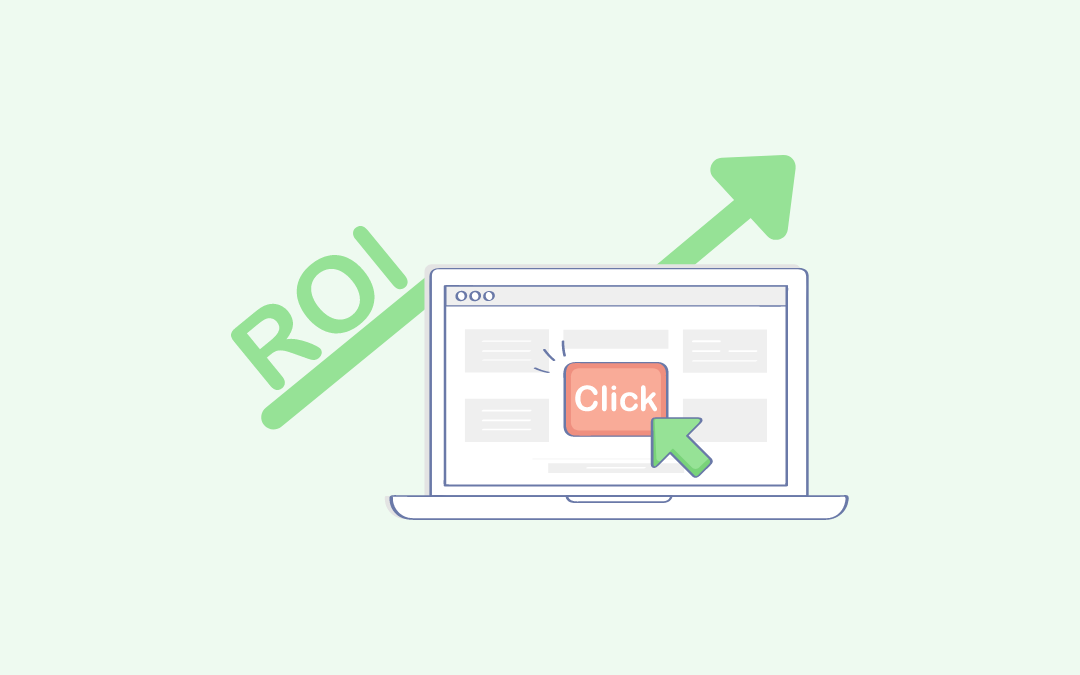Remember the last time you were actually surprised by a delightful experience from a customer service team?
Maybe you ordered your favorite pizza online, only to find the restaurant didn’t have it in stock anymore. Instead of issuing a refund, the customer care representative had the pizza delivered right to your doorstep from another location. Or perhaps you booked a hotel with your family, and since the hotel was not all packed, the customer relationship manager offered you a large suite with a great view so you could enjoy the vacation.
These amazingly surprising instances of added value are forms of proactive customer service. In this fast-paced competitive world, customers expect a lot from companies than ever before. It is quite obvious that customers can afford to have the highest expectations because they can easily switch to another company if their needs aren’t met.
#FACT TIME: More than 71% of people recommend a service or product because they have had a delightful experience.
Here’s the deal. Either you can sit tight and wait for customers to shoot their questions and issues via email, chat, and phone. This is reactive customer service. Or you can take the initiative to offer help before the customers ask for it. This is proactive customer service.
Surely, there is nothing wrong with answering or addressing the issues when you are asked. But it’s simply a lot more impressive to reach out and solve a potential problem before the customer seeks help.
In this blog guide, we will be discussing the benefits of proactive customer support, why is it better than reactive customer support, and how you can implement it!
What is Proactive Customer Service?
Proactive customer service or proactive support is all about making the first move to help your customers before they reach out to you. The businesses first identify the potential problems and then resolve them for the customer.
If the customer isn’t getting help unless they ask for it, you are simply following the reactive customer support process. The mentality behind the proactive approach is to go above and beyond for the customer to provide a great experience. To increase customer loyalty and trust in your brand, you definitely need to step up and offer the best possible experience.
However, not all customer service can be proactive. Reactive customer support is also valuable and is reserved for different situations.
Why Is Proactive Customer Service Better Than Reactive?
Proactive customer service is like getting the COVID vaccination which will protect your body from the virus in the future. The solutions offered here are to problems that haven’t happened yet, making one prepared in advance.
On the other hand, reactive customer service is like that kit of COVID medication that is provided after the virus has already affected your body. Here, the customer service representative comes in to offer the solutions once the problem has already occurred.
Offering help to the customers when they ask for it is alright and there’s nothing new in it to delight the customer. But if you identify and react to the customer problems before they grow into bigger pain points, your customers won’t be annoyed. It also allows you the opportunity to build customer loyalty and collect valuable customer feedback.
Why is Proactive Support Important?
We’re living in a customer-centric world and brands investing their money to focus on customers are achieving great results. Here are a few reasons why you should adopt a proactive customer approach.
- Boosts Brand Reputation: It is well known that loyal customers are more likely to make a repeat purchase multiple times and are also more likely to refer other people to the brand. So, taking a proactive approach to providing a delightful customer experience can help you in easily boosting the brand reputation.
- Increase Retention Rates: Proactive customer service can increase the retention rates by almost 3 to 5% and that eventually increases customer loyalty. As a fact, retained customers are worth more and cost less than getting new customers.
- Decrease Support Calls: When your proactive customer support team will identify and resolve the issues, you will have fewer support calls to the field. This reduces the number of support tickets your team receives and allows them to work more efficiently, also optimizing average handle time for calls.
- Instant Connection: When a visitor lands on your website for the first time, help will surely be appreciated. The customer support agent can initiate proactive messaging to connect with the potential customer. This helps in knowing their requirements, issues, preferences, and you can provide them with valuable product information.
- Increase Conversion Rates: With the help of proactive assistance, spark interest in your services and product. The customer agents can inform visitors about the latest launches, deals, and discounts. This offers the chance for giving an exemplary customer experience and also increases the chances of sales.
How to Get Started With Proactive Support?
The most common challenge that your team will face while switching from reactive to proactive support is identifying the different situations where a customer might need your help before they ask for it. You need to assess and find the biggest pain to deal with on your website and the points where visitors might scratch their heads for questions.
Here’s what you need to do to effectively getting started with proactive customer support!
1. Gather Customer Feedback
The first priority is your customers and you should start listening to them. This helps you in understanding their needs and also makes it easier for your teams to identify areas of weakness. Customer service has always been about giving customers what they want and you can find that out directly from your website visitors.
With the help of a survey maker, you can implement a feedback form on your website to ask the visitors about your products and services. You can even shoot straight questions like “How could we have improved your shopping experience with us?” or “What improvements do you wish to see on your next visit?”
Also, review the customer service tickets to identify the common issues for correcting them before more customers become unhappy. Lastly, you can run an email campaign to ask for feedback related to your services. Gather all the feedback data and analyze it to find the pain points. Once you identify these, you can actually find the solutions.
2. Create a Knowledge Base
A lot of customers prefer to find answers to their queries on their own rather than having to contact the customer support department. Well, if that’s the case, Knowledge Base is the perfect solution to serve and delight your customers 24/7.
A knowledge base contains all the information about the company, its products, and services. There are also different guides, FAQ sections, screenshots, and video tutorials on related topics so customers can easily troubleshoot common issues.
Link the various guides and articles of Knowledge Base to your product and service web pages so customers can easily find their way. This self-support portal is a proactive approach as you’re anticipating potential problems and offering the solution before they even arise.
3. Send Proactive Chat Messages
The proactive chat feature allows you to engage proactively with your customers. When the customer is stuck on a certain part of your website, stepping in to offer support is more impressive than offering self-help guides.
The quickest way to do this is by getting Live Chat on your website. It allows your team to monitor and track the customer’s activities in real-time. You can set criteria and analyze how much time the customer is spending on a particular page.
If the visitor is switching tabs or websites, it’s the right time for your customer support agent to step in and interact with the potential customer. This increases the chance of conversion and the agent can easily provide the benefits of the product they are browsing. Also, they can suggest other products or services based on the customer’s needs.
4. Admit Mistakes and Be Honest
Customers contacting you about some glitches, technical issues, or common bugs that they experienced don’t put up the right image. They’d love to hear about the issues beforehand and also the assurance that your team is working to resolve the issue.
Let’s say that your development team is scheduling a software update. The proactive approach here is to inform your customers about the update timing so that they can grab any important information from the software in a timely manner.
If your team finds out about certain issues or glitches that might hamper the user experience, inform the customers about the same and offer an apology. Tell them what your team is doing to eliminate the problem and make sure to provide your customers with the customer support contact information in case of any queries or feedback.
5. Reward Customers with Deals & Offers
Offering rewards to regular customers proactively between purchases provides a great opportunity to interact with customers. Schedule calls or meetings with regular customers to strengthen your relationship with them.
You can provide them the information about the ongoing offers and can also discuss any issues they might be having with your services.
Let’s say that the subscription plan of a customer will be ending next month. Sending an email 15 or 30 days prior to the renewal and offering them a suitable discount will increase the chances of their stay. With just a well-structured email, they don’t have to interact with you over the call, which will increase satisfaction as well.
6. Follow Up on Abandoned Carts
If the customer has shown interest in your product and added it to the cart, there surely must be an issue or reason behind abandoning the cart. When the customer doesn’t complete the purchase, your customer support team should reach out to them to find out what went wrong.
Sometimes, there’s an issue with the payment or maybe some glitch at the checkout page. By reaching out to the customer, it shows that you really care about their shopping experience. Run personalized email campaigns for such customers with a call to action (CTA) that would bring them back to finish the purchase.
If you don’t have enough resources to reach out to all the customers individually, you can design and automate email campaigns. The ones where the customers respond can be filtered to contact later with deals and discounts.
Is Proactive Customer Service Worth It?
Proactive thinking and implementation of it in your reactive customer service strategies are surely like going the extra mile to delight your customers. Handling the issues and problems of customers before they even manifest makes them come back for your services.
Companies invest a lot in building customer relationships and loyalty. Who wouldn’t want their customers to return for more purchases? Well, proactive customer engagement is a huge positive in terms of providing delightful customer experiences.
Instead of having the customers contact you by phone and chats, you can answer their questions with self-service guides, live chat, and automated emails. You can use a customer service tool to streamline it for you and make it more efficient.
Developing a Habit of Proactive Customer Support
Proactive customer service statistics prove that companies who have already implemented this are avoiding a huge pile of support tickets. The strategy is proven to increase customer loyalty and boost retention rates.
You can easily get to know your customers through feedback and other tracking analytics. Spend quality time in focusing on the common issues and build a great proactive support team to implement the solution in your business. With this customer-centric approach, you can outperform your competitors in offering a better customer experience.
FREE. All Features. FOREVER!
Try our Forever FREE account with all premium features!







